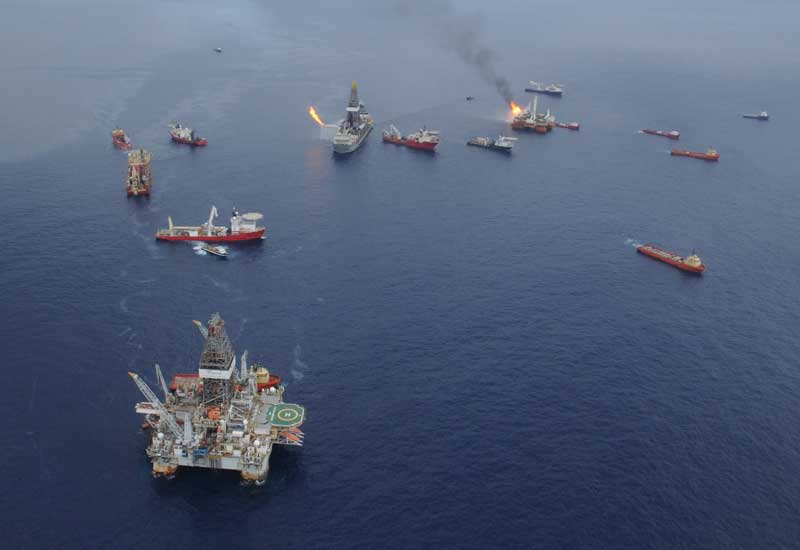Following a technical review this week, the National Incident Commander has approved the plan for BP to move ahead with replacing the existing lower marine riser package (LMRP) containment cap over the Deepwater Horizon’s failed blow-out preventer (BOP) with a new sealing cap assembly.
The new sealing cap contains three closing rams and multiple ports for connection to additional containment options. The new cap creates the potential to increase oil and gas containment capacity to greater than 50,000 barrels per day and should improve containment efficiency during hurricane season by allowing shorter disconnect and reconnect times. The new cap assembly also might simplify future well kill and cementing procedures through the relief wells, which in turn could increase the probability of success for those operations. In addition, the new cap should enable a shut-in test to be performed to determine integrity of the MC252 well.
The plan for installing the sealing cap will involve a multiple stage process and several vessels and remotely operated vehicles. First, the existing LMRP cap and the remaining riser flange will be removed from the top of the Deepwater Horizon LMRP. Next, a flange transition spool will be installed using the Boa Deep C. Then, using the Discoverer Inspiration, the three-ram capping stack will be connected to the top of the spool.
The sealing cap operation is expected to begin this weekend to take advantage of anticipated favourable weather conditions and is expected to take between four and seven days to complete. The sealing cap installation procedure is intended to run in parallel with the installation and start-up of the Helix Producer containment system, which could begin ramping up containment operations as early as Sunday.
Because the LMRP cap must be removed to conduct this sealing cap operation, there will be a period of decreased oil and gas capture from the wellhead. During the installation of the sealing cap assembly, the Q4000 should continue to capture and flare oil and gas. Additionally, oil and gas also may be captured by the Helix Producer containment system once it becomes operational. Unlike the LMRP containment cap system, the Q4000 and Helix Producer systems are connected to the kill and choke lines on the BOP via the existing top kill manifold.
This new sealing cap has not been deployed at these depths or under these conditions, and there can be no assurance that the sealing cap will be successfully installed or installed within the anticipated timeframe. Contingency LMRP caps are positioned on the seabed and it should be possible to return to the current containment configuration if needed.
Work on the first relief well, which started May 2, continues. The well reached a measured depth of 17,810 feet on July 9. The previous ranging run indicated that the relief well is now approximately 5 to 7.5 feet horizontally away from the MC252 well. The next planned step is to do another ranging run and then drill down 30 feet to a measured depth of 17,840 feet. The series of drilling and ranging runs will continue for approximately another 60 feet. The 97/8 inch liner will then be set before beginning the final series of drilling and ranging runs before intercepting the MC252 well. Although uncertainty still exists, the first half of August remains the current estimate of the most likely date by which the first relief well will intercept the MC252 well and kill operations performed.
The second relief well, which started May 16, is drilling at 15,963 feet. The next planned step is to set the 117/8 inch casing. Following casing and cementing, the second relief well will pause to avoid any interference with the first relief well activities, but be positioned should any issues arise with the first relief well.


